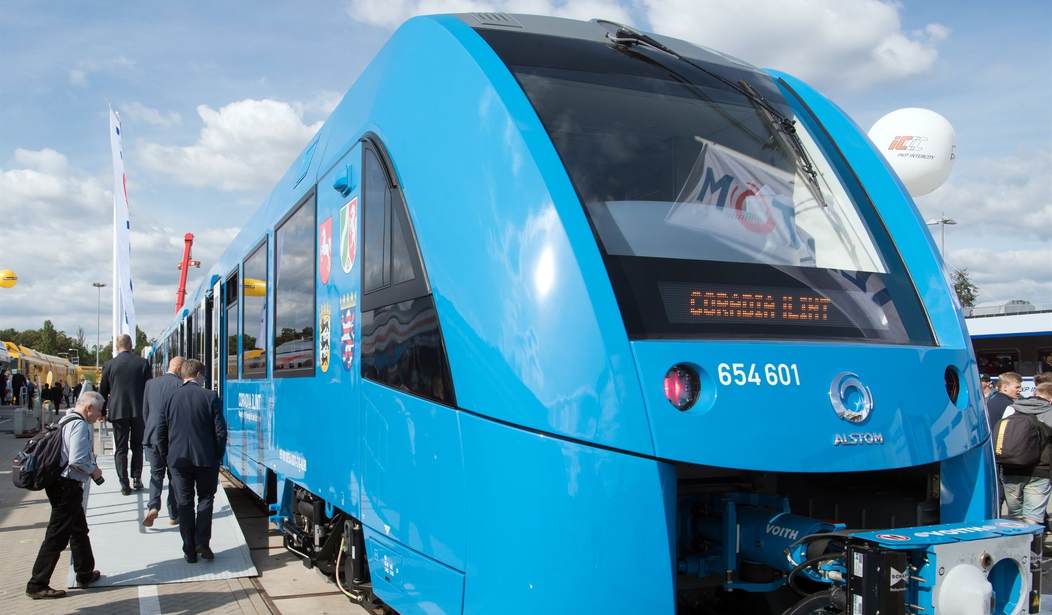Much of the focus in the green energy movement is on electric vehicles. But at least for the time being, widespread use of them will remain hampered by a combination of factors including infrastructure issues, the availability of charging stations, and their high cost. But that’s not the only alternative under consideration for those who want to do away with gas and diesel vehicles. There are already small numbers of hydrogen-powered cars and buses on the roads. Is that going to be the wave of the future or at least part of it? The Associated Press looked into the question this week and found that public transport companies have been adopting hydrogen buses in a number of locations, but while they may hold some promise in the future, the technology still faces a number of challenges.
Each morning at a transit facility in Canton, Ohio, more than a dozen buses pull up to a fueling station before fanning out to their routes in this city south of Cleveland.
The buses — made by El Dorado National and owned by the Stark Area Regional Transit Authority — look like any others. Yet collectively, they reflect the cutting edge of a technology that could play a key role in producing cleaner inter-city transportation. In place of pollution-belching diesel fuel, one-fourth of the agency’s buses run on hydrogen. They emit nothing but harmless water vapor.
Hydrogen, the most abundant element in the universe, is increasingly viewed, along with electric vehicles, as one way to slow the environmentally destructive impact of the planet’s 1.2 billion vehicles, most of which burn gasoline and diesel fuel.
To be clear, hydrogen is a totally viable fuel and we already use quite a bit of it. Hydrogen cells used in vehicles only produce water vapor as a byproduct, making the environmentalists happy. As the article notes, it’s also the most abundant element in the universe, so it’s not as if we’ll be running out any time soon. But at least for now, hydrogen also comes with one major flaw. The most common way we have of producing hydrogen involves splitting water by running an electric current through it. The problem is that it takes more electrical power to produce the hydrogen than you get out of it when using it as a fuel, so the operation is a net power loss.
On top of that, most of the electricity we use to split the water is still generated by burning natural gas, oil, coal, or other fossil fuels, canceling out the perceived benefit in terms of green energy goals. If you could get to the point where you can generate enough electricity through solar and wind energy to produce enough hydrogen to replace all of the gasoline we use today, you’d really be onto something. But currently, the nation doesn’t even produce enough green electricity to power 11% of the grid nationally, and cranking out that much hydrogen would increase the demand dramatically.
Then there are the logistical considerations to overcome. There are only a relative handful of places in the country currently where you can refill a hydrogen cell in your vehicle. Transit operations can handle that problem by installing their own hydrogen stations and controlling the range of their buses and trains, though it involves a significant investment upfront. Urban commuters could probably adapt to such a system if there were hydrogen stations conveniently located near their homes and their place of employment.
But longer trips would be out of the question until hydrogen stations become as ubiquitous as gas stations. And with so few vehicles using hydrogen so far, where is the profit in investing in all of those stations? It’s something of a Catch-22 situation.
The fact is that if there was a perfect, easily achievable answer to replacing gasoline with another viable fuel, we’d probably have already done it. But oil and natural gas are just such remarkably flexible and useful fuels nearly as soon as you get them out of the ground (aside from the costs involved with refining the oil) that a practical replacement still seems to be well over the horizon. Now, if you can figure out how to build a functional anti-gravity drive, you’d probably really be onto something. Maybe we should be looking a little harder for those UFOs.








